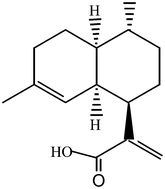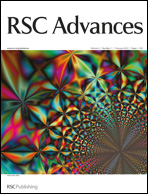Artemisinic acid: A promising molecule potentially suitable for the semi-synthesis of artemisinin
Abstract
Artemisinic acid, an amorphane sesquiterpene, is isolated from Artemisia annua L. Although having less efficacy than artemisinin, artemisinic acid has a variety of pharmacological activity, such as antimalarial activity, anti-tumor activity, antipyretic effect, antibacterial activity, allelopathy effect and anti-adipogenesis effect. This development has drastically increased artemisinic acid demand worldwide. Although many approaches, namely extraction of artemisinic acid from A.annua L, in vitro production of artemisinic acid by cell and tissue culture, total chemical synthesis and fermentation production by use of synthetic biology technology can improve artemisinic acid production, A.annua L. is currently the only commercial source for the artemisinic acid supply in the international market. Recently tremendous advances, however, demonstrate that the production of artemisinic acid in microorganisms and further semi-synthesis to artemisinin is a feasible complementary strategy that would help reduce artemisinin cost in the future. The key genes encoding for enzymes regulating the biosynthesis of artemisnic acid in planta are fully understood to enable metabolic engineering of the pathway, and results from pilot genetic engineering studies in microbial strains thus far are very inspiring. This review, therefore, covers the recent developments related to the physico-chemical properties of artemisinic acid, bioactivity of this important molecular, solvent extraction strategies and chemical analysis, and highlights a scale production of artemisinic acid by synthetic biology and the relevant enzymes and genes. In the end the status of artemisinic acid in the biosynthesis pathway of artemisinin is discussed in detail. Together these results provide a synopsis of a more global view of artemisinic acid than previously available.


 Please wait while we load your content...
Please wait while we load your content...